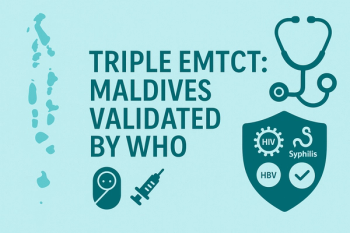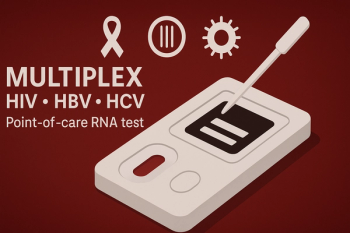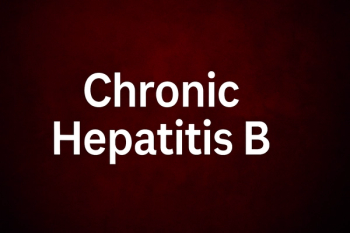
- October 2019
- Volume 4
- Issue 5
Where to Treat Uncomplicated HCV? Assessing the Impact of Shifting Care From Specialists to PCPs
One promising proposal to greatly increase access to DAA HCV therapy is to keep this treatment with appropriately trained PCPs, in contrast with referring patients to infectious disease, gastroenterology, or hepatology subspecialists.
Highlighted Study: Outcomes of Treatment for Hepatitis C in Primary Care Compared to Hospital-Based Care: A Randomized, Controlled Trial in People Who Inject Drugs
[published online June 22, 2019]
Wade AJ, Doyle JS, Gane E, et al. Clin Infect Dis. doi: 10.1093/cid/ciz546.
Hepatitis C virus (HCV) infection remains a common cause of chronic liver disease worldwide, with a global prevalence of 1%.1 Despite the advent of highly effective antiviral regimens, the health burden of HCV remains substantial, with approximately 20,000 attributable deaths annually in the United States alone.2 The World Health Organization has thus proposed an HCV containment target of an 80% decrease in incidence by 2030.1 However, this lofty goal is at odds with the current epidemiology of HCV; in the United States, HCV incidence has steadily increased over the past decade, which is largely attributable to the current opioid epidemic among people who inject drugs (PWID).2
Previous treatment regimens that included pegylated interferon were minimally efficacious and challenging for patients to tolerate. With the advent of direct-acting antivirals (DAAs), treatment has become more tolerable and cure rates have increased markedly.3 Strikingly, though, less than 40% of individuals with known infection undergo antiviral therapy, with current systems of disease management hampered by (a) limitations in expertise among primary care professionals (PCPs) in the treatment of hepatitis C and (b) barriers to HCV specialty access. A critical need exists to overcome these obstacles, and without change, the prevalence of HCV will progressively increase, exacerbating the global negative impact of this disease.
One promising proposal to greatly increase access to DAA HCV therapy is to keep this treatment with appropriately trained PCPs, in contrast with referring patients to infectious disease, gastroenterology, or hepatology subspecialists.4,5 An important question in this transition, however, is whether PCPs can maintain the high rates of sustained virologic response (SVR) seen in subspecialty HCV care, in which cure rates are typically >95% for patients completing therapy. This question is particularly pertinent among PWID, who represent a high percentage of patients with new infections and present unique challenges in accessing HCV therapy.
In a retrospective study, Wade et al provided important insight into this dilemma.6 In their trial, the authors randomized PWID with chronic HCV to receive DAAs in primary care (PC) or hospital specialist outpatient clinic (SOC) settings. The trial took place at 13 PC sites staffed by general practitioners who provided opioid substitution therapy in Australia and New Zealand between 2015 and 2018. The purpose of the study was to determine whether treatment in the PC setting was noninferior to standard of care regarding SVR. The investigators also examined comparison of treatment initiation, rates of SVR at week 12 (SVR12), and the care cascade (defined as diagnosis using HCV antibody and transient elastography, assessment, treatment initiation, and cure) by study arm. The study excluded patients with cirrhosis, HCV treatment experience (with the exception of pegylated interferon/ribavirin), and HIV or hepatitis B virus coinfection.
Overall, 144 participants with genotype 1 or 3 chronic HCV infection were recruited and 136 were randomized; nearly all were PWID, and the majority were on opioid substitution therapy. For patients with genotype 1, the antiviral regimen was 12 weeks of paritaprevir/ritonavir/ombitasvir/dasabuvir; for patients with genotype 1a, the investigators added weight-based ribavirin. For patients with genotype 3, the authors used 12 weeks of sofosbuvir and daclatasvir.
In the per-protocol analysis, 100% of patients who completed therapy in PC (n = 28) achieved SVR12, which was noninferior to the SOC arm. Significant dropout was observed in both arms during the trial. However, intention-to-treat analysis revealed that a statistically significant higher percentage of patients initiated treatment in the PC setting compared with those receiving SOC (75% vs 34%, P <.001). Of patients who did initiate therapy, only 13% failed to complete liver assessments or were lost to follow-up in the PC arm compared with 36% of patients in the SOC arm. Among all participants in the intention-to-treat analysis, including patients who never started therapy or dropped out of treatment, SVR12 in the PC setting was significantly higher compared with SOC (49% vs 30%, P = .043). Thus, in sum, the cascade of HCV care was, at a minimum, noninferior in the PC arm.
This is one of the first randomized, controlled trials to examine the initiation of DAA treatment and HCV outcomes in a PC versus specialist clinic setting among PWID. The authors concluded that community-based treatment of uncomplicated hepatitis C improved treatment uptake and cure. Although this was a noninferiority trial, the PC arm care cascade appeared superior, with a higher percentage of patients overall achieving SVR12. Despite these findings, access to initiation of HCV treatment in nonspecialist settings remains low. HCV specialty clinics may be better for treating predominantly complicated chronic HCV infection—HIV or hepatitis B coinfection, cirrhosis, infection in treatment-experienced patients, or other complicating factors—whereas uncomplicated HCV should perhaps increasingly become the domain of PCPs. Broadening access to community-based practices and easing restrictions on prescriber type may have vast implications for effective treatment and cure of HCV.
Sean Bullis, MD is an infectious diseases fellow at the University of Vermont Medical Center, Burlington, VT.
Andrew J. Hale, MD is an infectious diseases physician at the University of Vermont Medical Center and Assistant Professor of Medicine at Larner College of Medicine at the University of Vermont, Burlington, VT.
References
- World Health Organization. Web annex B. WHO estimates of the prevalence and incidence of hepatitis C virus infection by WHO region, 2015. In: global hepatitis report 2017. apps.who.int/iris/bitstream/handle/10665/277005/WHO-CDS-HIV-18.46-eng.pdf. Published 2018. Accessed July 25, 2019.
- Surveillance for viral hepatitis — United States, 2015. Centers for Disease Control and Prevention website. cdc.gov/hepatitis/statistics/2015surveillance/commentary.htm. Updated June 19, 2017. Accessed July 25, 2019.
- HCV guidance: recommendations for testing, managing, and treating hepatitis C. Infectious Diseases Society of America. hcvguidelines.org. Accessed July 25, 2019.
- Thomson M, Konerman MA, Choxi H, and Lok AS. Primary care physician perspectives on hepatitis C management in the era of direct-acting antiviral therapy. Dig Dis Sci. 2016;61(12):3460-3468. doi: 10.1007/s10620-016-4097-2.
- Kattakuzhy S, Gross C, Emmanuel B, et al; ASCEND Providers. Expansion of treatment for hepatitis C virus infection by task shifting to community-based nonspecialist providers. Ann Intern Med. 2017;167(5):311-318. doi: 10.7326/M17-0118.
- Wade AJ, Doyle JS, Gane E, et al. Outcomes of treatment for hepatitis C in primary care compared to hospital-based care: a randomized, controlled trial in people who inject drugs [published online June 22, 2019]. Clin Infect Dis. doi: 10.1093/cid/ciz546.
Articles in this issue
about 6 years ago
Antibiotic Resistance: Patients Don't Get It, and We Need to Helpabout 6 years ago
Evaluating the Role of New Beta-Lactam Agents for Uncommon Pathogensabout 6 years ago
Investigational Treatments for Clostridioides difficile InfectionNewsletter
Stay ahead of emerging infectious disease threats with expert insights and breaking research. Subscribe now to get updates delivered straight to your inbox.






































































































































































































































































































